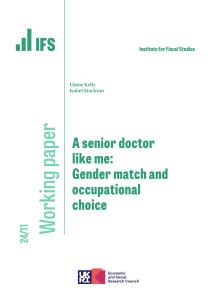Health care in England is predominantly provided free at the point of service through the publicly-funded National Health Service (NHS). Total NHS expenditure, which has risen in real terms by an average of 3.7 per cent per annum since the inception of the NHS in 1948, constituted 7.9 per cent of GDP in 2012. This paper presents a summary of the trends in medical expenditure in England together with, using detailed administrative data, an analysis of the growth over 15 years of expenditure and activity in hospital inpatient health care, which represents around 20–25 per cent of all NHS expenditure. We document the coincidence of observed trends in expenditure with reported activity, morbidity and the proximity of individuals to death. We find that: (i) expenditure for both elective and emergency inpatient care broadly follows activity, so that expenditure is mostly driven by activity rather than unit costs; (ii) expenditure is concentrated in individuals with multiple diseases, so that the prevalence and identification of complex medical conditions are important drivers of expenditure; and (iii) health care activity rises substantially for individuals in the period before death, so that expenditure is driven substantially by mortality in the population. Taken together, these findings indicate that this element of health care expenditure in England has been substantially driven by the underlying morbidity and age of the population in conjunction with improving health care technology.









